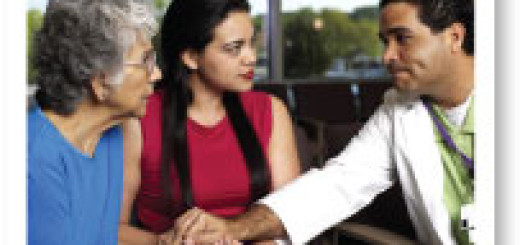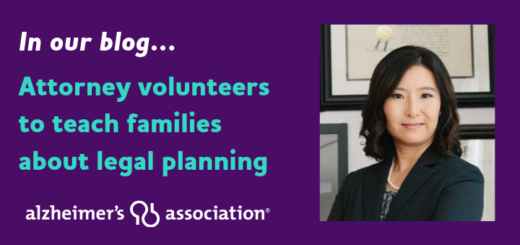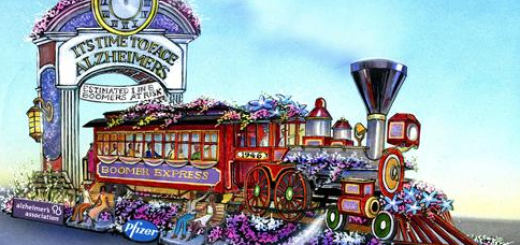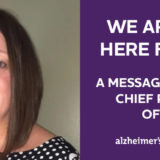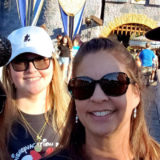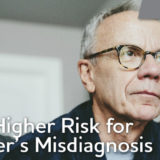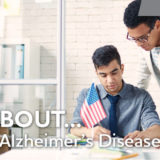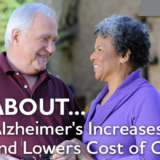Supporting Native American elders living with dementia
November is Native American Heritage month. As the number of older Native Americans grows, so does the prevalence of Alzheimer’s disease. Native Americans encounter difficulties getting a diagnosis, receiving care and educating their communities. To help us better understand some of these barriers, we spoke with a few local Native American women.
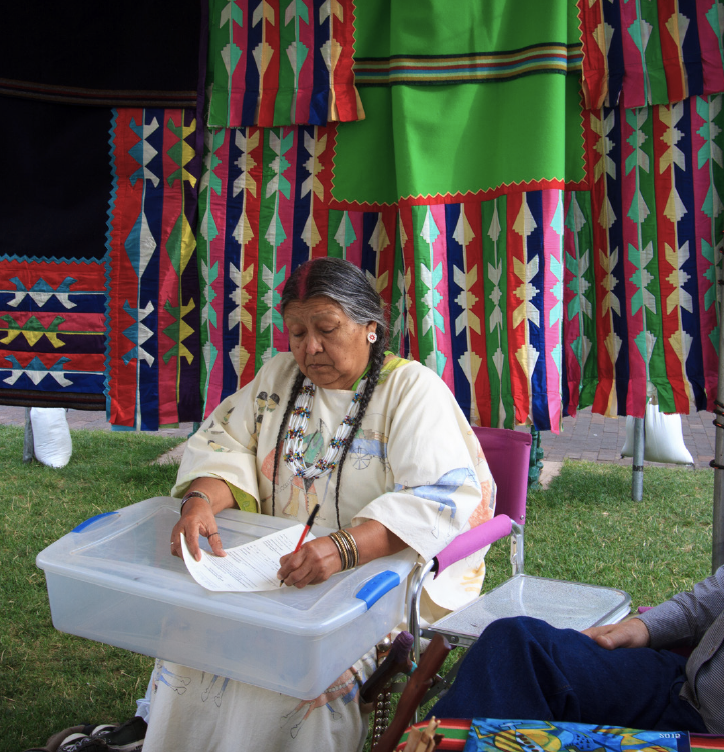
A growing older population
It comes as no surprise that with advances in modern medicine, people are living longer. This is especially true for the Native American population. A Native American child born in 2010 can expect to live 73.7 years. This is nearly 30 years long than a Native American child born in 1969.
Because of this, the number of older adults is also increasing. Having a larger set of older tribal members is considered a blessing because of the value placed on the elders’ wisdom, experience, knowledge, and contributions to their communities.
Since dementia is more common with advanced age, as the Native American older adult population grows, so too will the impact of cognitive impairment. By 2060, it is projected that Native Americans 65 and older living with dementia will grow by over five times.
Brain health
Older Native Americans have experienced systemic racism, including a lack of access to education and economic growth, along with discrimination in the delivery of health services. These conditions have led to some of the risk factors for Alzheimer’s and other dementias have been found more commonly in the older Native American population, including:
- Higher rates of diabetes
- Higher rates of high blood pressure
- Higher rates of heart disease
- Higher rates of cigarette smoking
- Fewer having completed high school or attained a college degree
The cultural and traditional teachings and practices within the Native American community help build strength and resilience. They can help elders retain their valuable knowledge, wisdom, and energy. High levels of social engagement with family and community, which are values deeply embedded in Native American traditions, are associated with reduced risk of cognitive decline. Other behaviors that can benefit brain health include:
- Eating a healthy diet
- Exercising the body
- Exercising the mind
- Staying socially engaged
“What I see with our people is that we ask a lot of questions,” said Darlene Franco of the Wukchumni tribe in Central California. “We will say, “˜Ask Grandma to tell me a story,’ or “˜Tell Uncle to tell me about when they were young.’ It helps them to think back. I think it’s kind of like a brain exercise, they’re thinking back to other times in their lives. I don’t see that a lot in other communities, but it is something we take the time to do.”
Receiving a diagnosis
While there are a large number of Native Americans who may be living with Alzheimer’s or another dementia, most of them do not receive a diagnosis. Only one in three report having spoken with a healthcare provider about the changes they have experienced.
Part of the problem may be the lack of access to health care providers. Some Native Americans may have to travel a long distance, lack access to transportation, or can’t afford the cost of healthcare.
Additional barriers may include providers who are not comfortable making a diagnosis, a lack of consistency in available providers and language barriers.
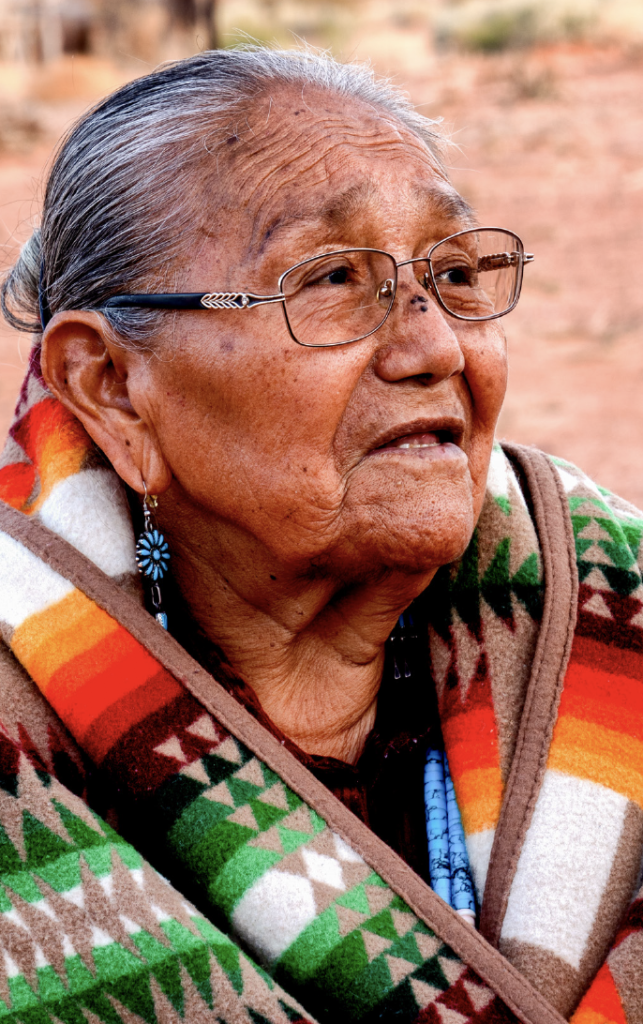
Lack of provider education
Many providers who care for Native Americans may benefit from additional training on brain health, the value of an early diagnosis and culturally appropriate tools to detect Alzheimer’s and other dementias.
“Families know something isn’t right but don’t know what it is,” said Raynell Miller of the Walker River Paiute tribe in Northern Nevada. “Providers aren’t testing for dementia or diagnosing it.”
Provider turnover
Another potential issue in receiving a diagnosis is the frequent turnover among healthcare professionals working with Native Americans. Seeing a new physician or nurse each visit can complicate discussions about memory and the process of getting a diagnosis.
“A lot of doctors or nurses in the Indian Health Service clinics change all the time,” said Darleen. “We don’t see the same person. I think they spend a lot of time trying to fix other issues like heart disease, and diabetes. Alzheimer’s disease isn’t treated as a problem.
Language barrier
Language and culture are specific to each tribe, yet most materials about dementia and caregiving are in English and frequently written to college literacy levels. As previously mentioned, many older Native Americans did not have access to higher levels of education.
In addition to a lack of resources for caregivers, available healthcare providers may not speak native languages, be aware of traditions, or address older adults respectfully and in a culturally appropriate way. There are few Native American healthcare providers.
Raynell shared one of the challenges faced by elders for whom English is not their first language. “When you ask an elder a question, like “˜how is your memory,’ they have to translate it in their mind. They are losing the meaning in the translation.”
Challenges in caregiving
For many Native American communities, it falls upon the tribe as a whole to care for their elders. Native Americans are more likely to live in a multi-generational family than any other group. “Our elders are on the highest pedestal,” said Raynell. “They’re even higher than our tribal government or tribal council. Why? Because they are the keepers of our language, our traditions and our history. Whether we’re related or not, as a community, we take care of our elders.”
Many people living with dementia may need substantial help and support from their family, tribe, and community as disease progresses. While caring for an older adult with dementia can have rewarding aspects and help bring families closer, multiple years of looking after a person’s needs can be challenging.
More than half of Native American’s over the age of 50 do not live on tribal land. This may make it harder to access services and supports from their family members and community.
Seeking help
Few tribal communities are currently addressing dementia as a public health issue. Many leaders did not know if data about dementia and caregiving were available to them. For individual tribal members who are aware of Alzheimer’s disease, few caregiver education and assistance programs are being offered.
Darleen said, “There is a lot of mistrust in having outside people come in.” This is especially true if Alzheimer’s is viewed as potentially embarrassing or shameful. Family caregivers may be reluctant to seek a diagnosis.
Leaders described Native American families as “embracing a “˜we take care of our own’ philosophy,” which may reduce the use of other support options. “If grandma or aunty has issues with memory loss,” said Raynell. “We’ve normalized it and just go with it.”
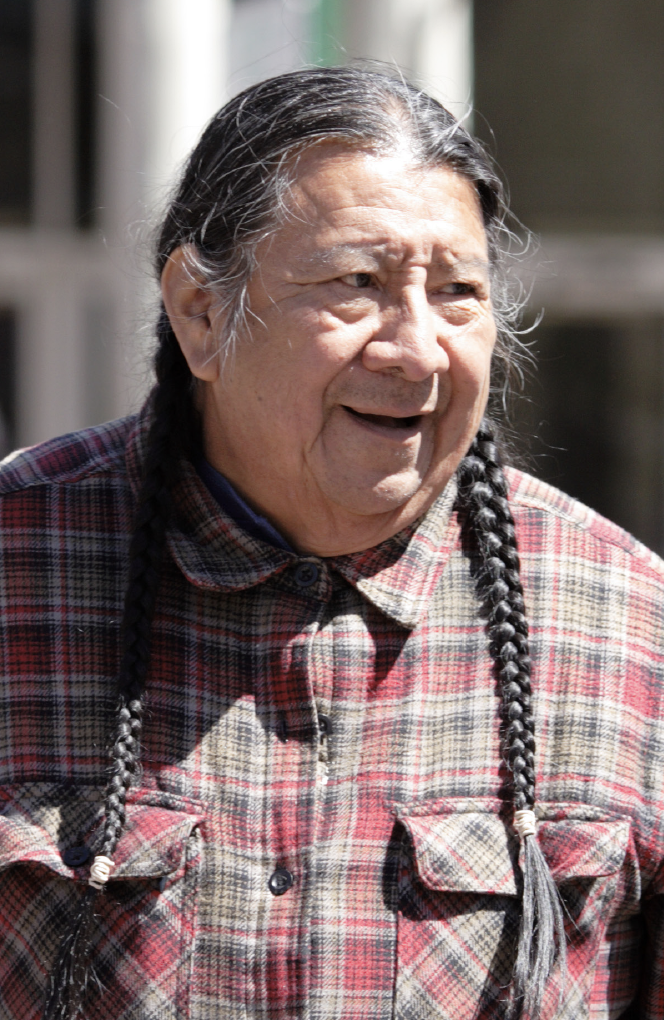
Educating the community
Many leaders felt that Alzheimer’s disease and dementia-related issues, including caregiving, are emerging issues in their tribe or community. They conveyed concern, however, about the lack of awareness among tribal members.
Darleen says, “I think part of the problem is that there is lack of education. People need to know what dementia is and what to look for.”
Access to information and formal support services can help caregivers and persons living with dementia on communicating with each other, managing other co-existing conditions, and planning for future needs.
Even before someone is diagnosed, everyone should be aware of the 10 warning signs of Alzheimer’s and dementia. Raynell said, “I’ve been looking at the 10 warning signs and trying to educate our communities about what to look for.”
A road map for the future
After working with many leaders in the Native American community, in 2019 the Alzheimer’s Association and Centers for Disease Control published the Healthy Brain Initiative: Road Map for Indian Country. This was the first-ever public health guide focused on dementia in Native American/Alaska Native communities.
The Road Map suggests eight strategies that embrace community strengths and can be tailored to the unique priorities of each community. Collectively, the strategies aim to improve health and wellness throughout the Native American community, address cognitive impairment, and help support Native American caregivers of those living with dementia.
For more information on Native Americans and Alzheimer’s disease, visit our website or download the Road Map for Indian Country.





